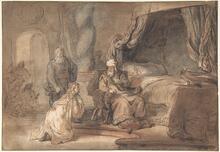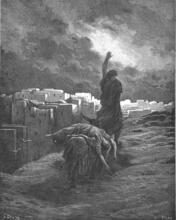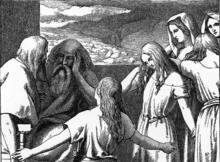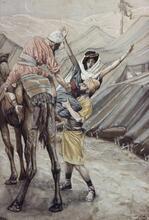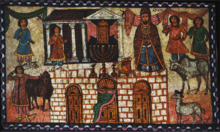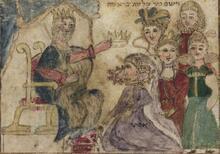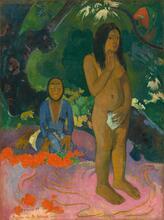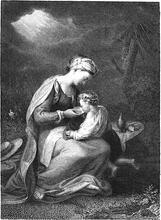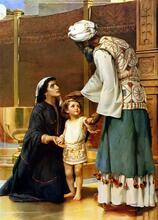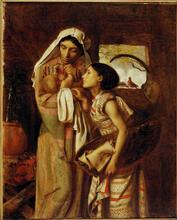Esau, Wives of: Midrash and Aggadah
Esau’s three wives are given more context and background by the rabbis than in the Torah. Esau’s first two wives, Adah and Judith, are described as adulterous and idolatrous. Adah (also called Basemath) is linked with harlotry, as her name is linked with jewelry and perfume. Judith (also called Ohlibamah) is similarly linked by her name to idolatry and is also described as adulterous. However, the rabbis disagree as to the nature of Esau’s third wife, Mahalat. Again through the interpretation of her name, the rabbis link her both to Esau’s repentance and alternatively to his fall further into evil.
Article
Esau married his first two wives, who were from among the daughters of Heth, against his parents’ wishes. According to the Rabbis, these women spent all their days in adultery and idolatry. Adah adorned herself with jewelry for harlotry, from which her name Adah is derived, with the meaning of the wearing [adayat] of jewelry (Gen. Rabbati, Vayishlah, p. 160). Adah’s other name was Basemath (based on the exchange of names between Gen. 26:34 and 36:2). This name also attests to her deeds, for she would perfume herself (mevasemet) for harlotry. Esau’s second wife, Judith the daughter of Beeri the Hittite, was an illegitimate child resulting from an adulterous union (Tanhuma, Vayeshev 1). Judith was also named Oholibamah, a name she was given because she built places for idolatry (bamot). She dwelled in Esau’s tent, but “performed her needs elsewhere” (that is, she engaged in extramarital relations). In taking two wives, Esau acted the same as the men of the Flood generation, who also took two spouses: one to provide them with offspring, and the other to provide them with sexual pleasure (see Adah, the wife of Lamech).
After Esau saw that his father Isaac had ordered Jacob not to take a wife from the daughters of Canaan, he abandoned his evil ways and married Mahalath, the daughter of his uncle Ishmael. By merit of this marriage, the Holy One, blessed be He, forgave Esau all his sins (Jerusalem Talmud Bikkurim 3:3, 65c–d). Mahalath’s name indicates that God pardoned (mahal) Esau. However, according to another view, Esau did not mend his ways and Mahalath was as evil as his first two wives (A type of non-halakhic literary activitiy of the Rabbis for interpreting non-legal material according to special principles of interpretation (hermeneutical rules).Midrash Statements that are not Scripturally dependent and that pertain to ethics, traditions and actions of the Rabbis; the non-legal (non-halakhic) material of the Talmud.Aggadah, ed. Buber, Gen. 28:9). This later marriage was also the result of negative motives: Esau plotted together with Ishmael to kill Isaac and Jacob, to marry the daughter of Ishmael, and to inherit both families. Accordingly, his marriage to Mahalath was ke-mahalah (as an affliction) and only increased the pain his parents had suffered upon his first marriages (Gen. Rabbah 67:8, 13).

